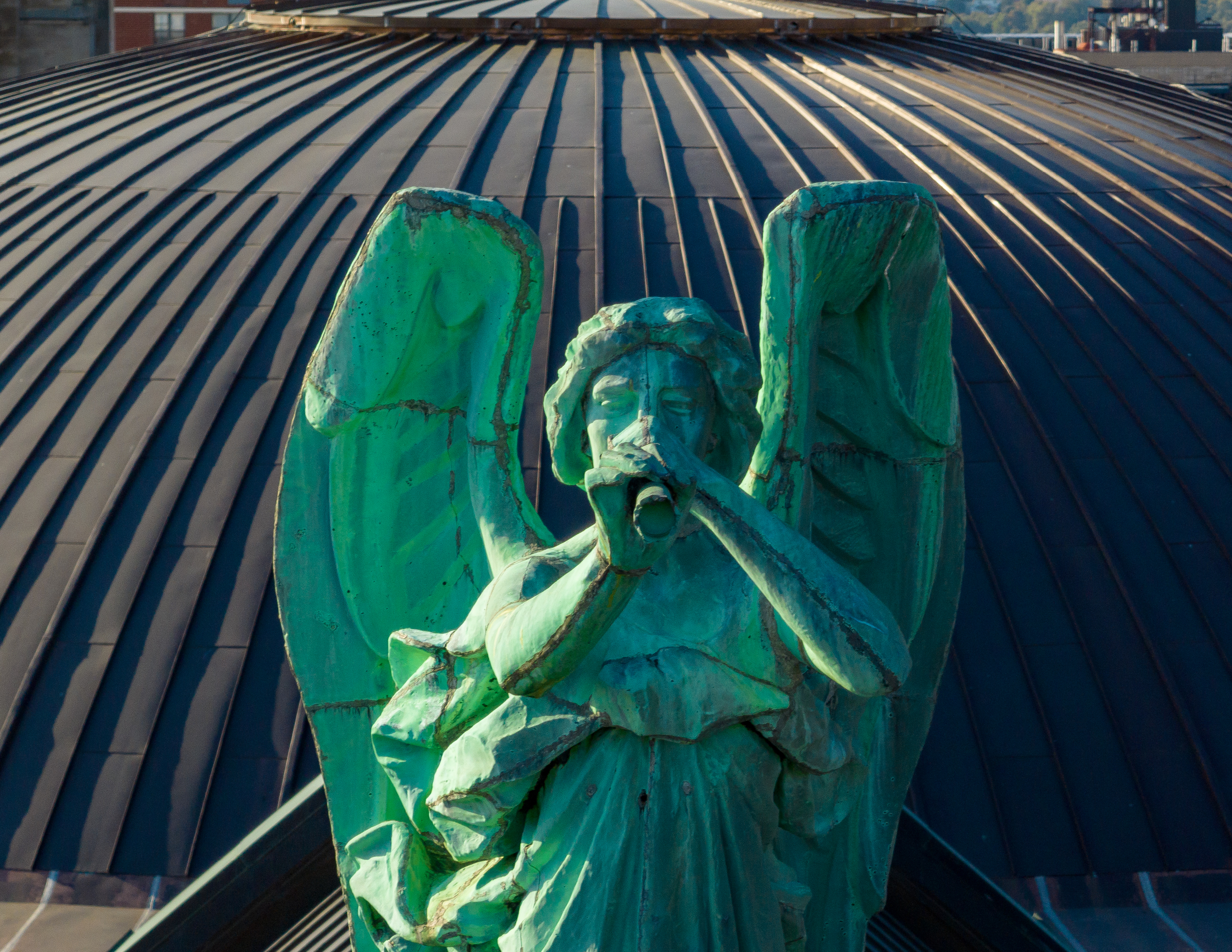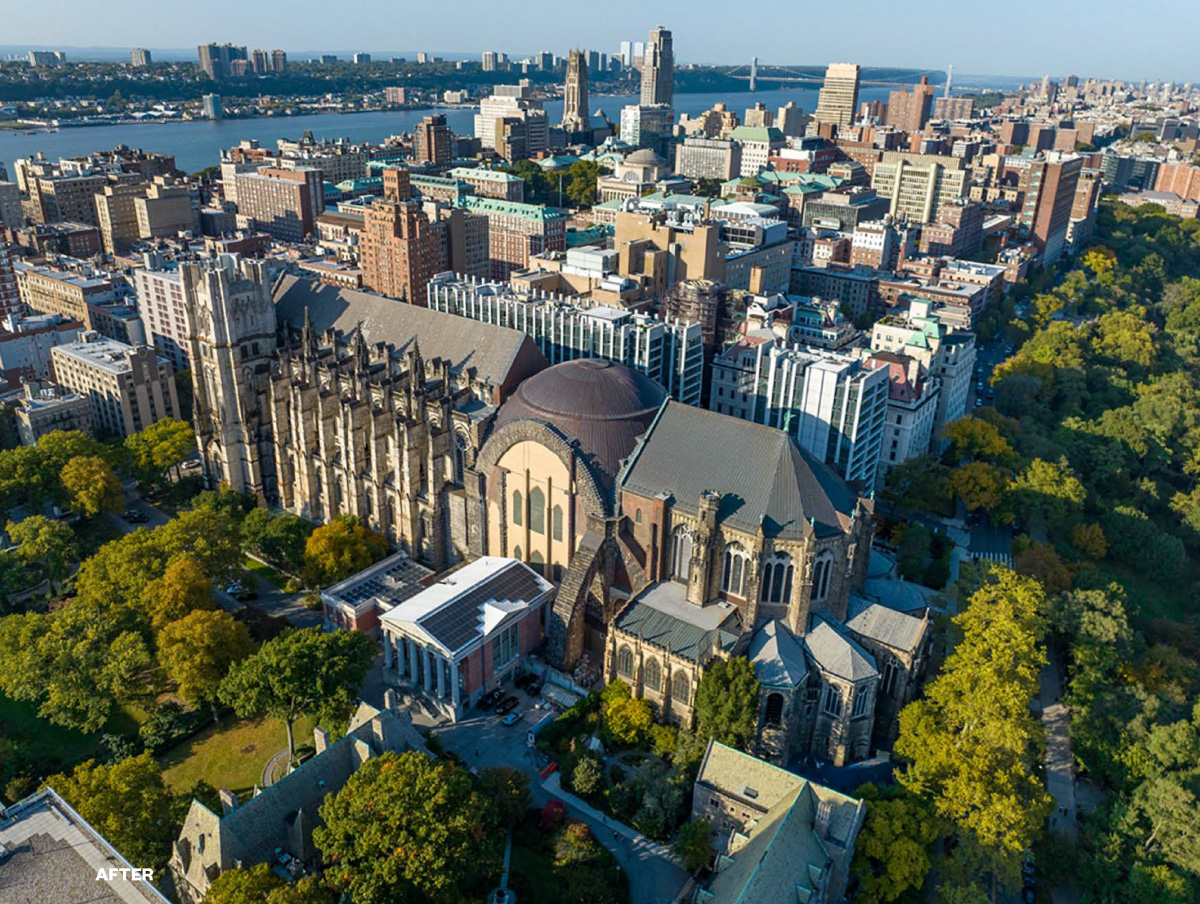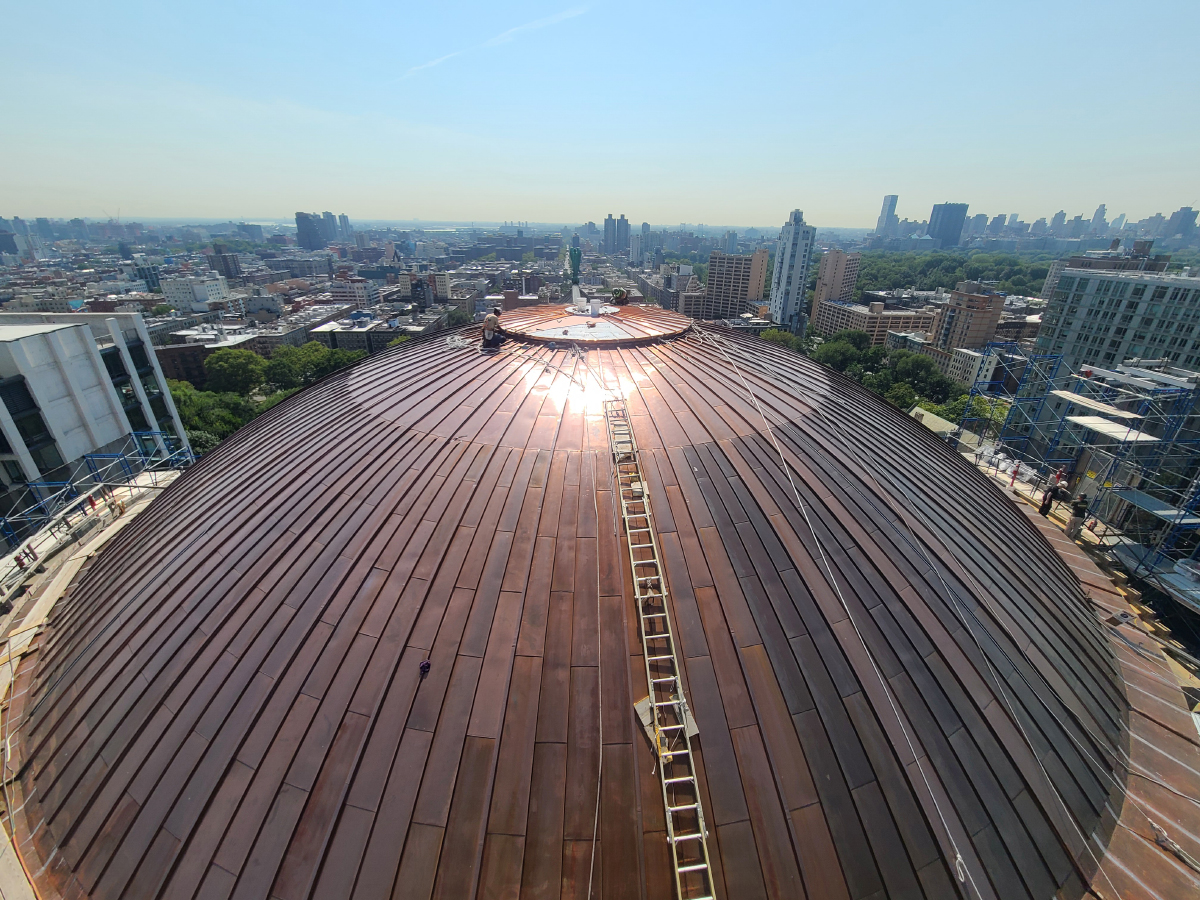New York, New York
Restoration
Architect
Ennead ArchitectsNew York, New York
General Contractor
James S. Mitchell & SonsGreenwich, Connecticut
Roofing Contractor
Nicholson & Galloway, Inc.Glen Head , New York
Located on a prominent hill in Manhattan’s Morningside Heights, the Cathedral of Saint John the Divine is the world’s largest gothic cathedral and is famously unfinished – particularly at the crossing enclosed by a temporary Guastavino tile dome in 1909. After more than a century of short-lived membrane roofs over the ostensibly temporary, but now beloved, tile dome, the decision was made to protect it with a durable copper roof that would complement similar systems elsewhere on the cathedral.
Silman, Building Conservation Associates, and James Gainfort performed a condition assessment that informed a restoration project led by architects Ennead and contractor James S. Mitchell & Sons along with roofing contractor Nicholson & Galloway. The team needed to find a solution that preserved the cherished dome while protecting the iconic tiles from the elements. After careful planning, the team selected copper that would match the adjacent nave and choir apse, so that over time, the roof would patinate and look as though has always been part of the cathedral. In 2019, 110 years after the dome was originally built, construction of the copper roof over the dome began, featuring both standing-seam and batten-seam systems and incorporating nearly 19,000 square feet of copper materials.
The team first removed old, compromised waterproofing and sodden insulation, allowing the tiles to dry before continuing with repairs. To increase stability, the team installed a new layer of insulation that will limit expansion and contraction associated with temperature changes. They also implemented a copper pan construction for the roof that had flexible seams to accommodate any movement from the underlying dome. With this project complete, visitors to the Cathedral will now feel as if the once-temporary dome was always meant to be a part of the historic structure, and the beloved tiles, which also underwent careful cleaning and restoration on their interior-facing side, will be protected for centuries to come.






